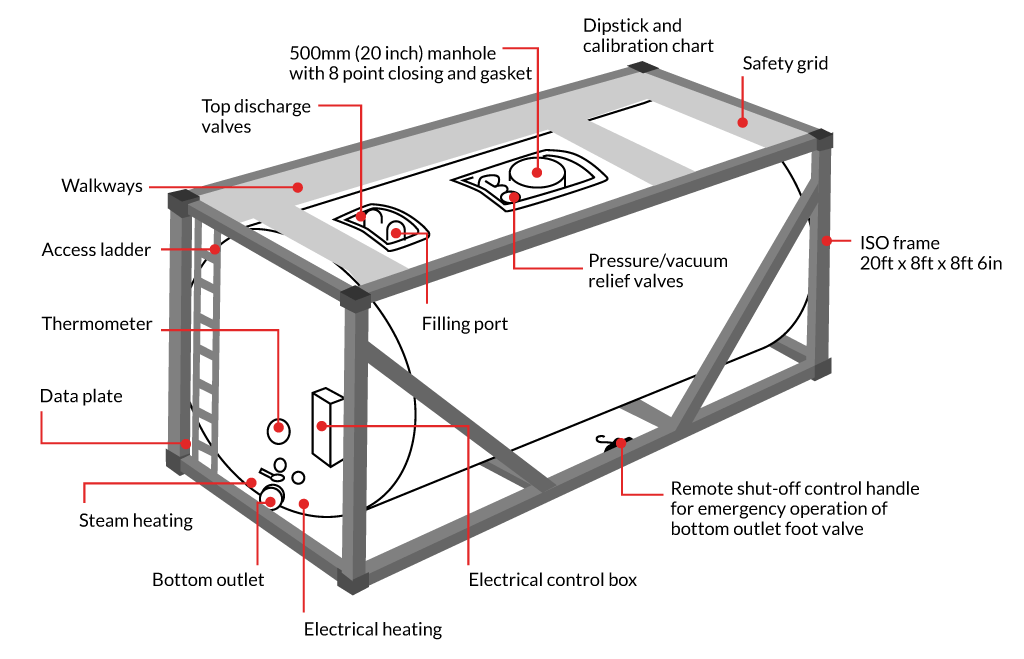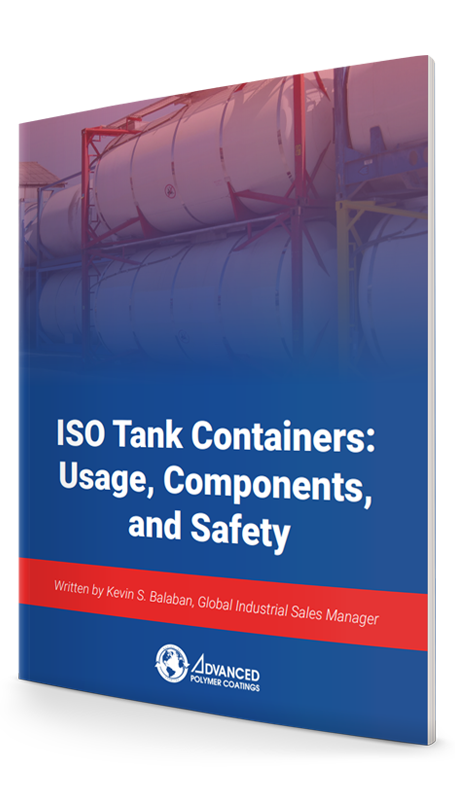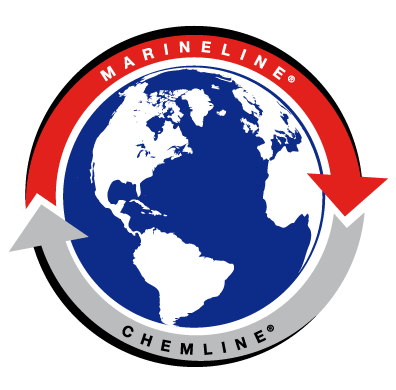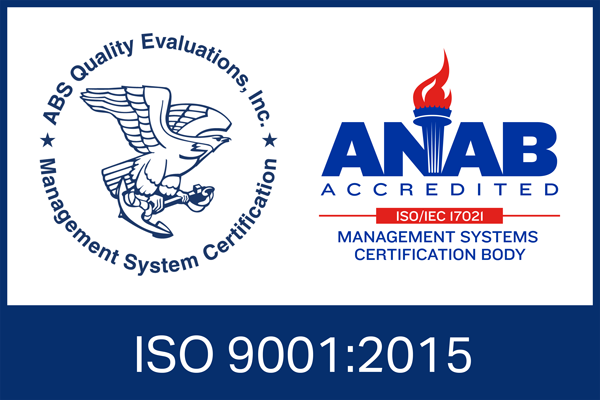ISO tank containers are manufactured to the International Organization for Standardization requirements for physical dimensions and universal feature set to carry liquids, hazardous and non-hazardous.
According to QY Research, the value of global ISO Tank Container market was $790m in 2018 and they expect it to reach $1580m by the end of 2025, growing at a CAGR of 9.0 percent during 2019-2025. Growing usage of ISO tank containers with its increased efficiency for efficient bulk liquid transportation is becoming a preferred choice for shipping.
At APC, we strive to be a world-class coatings solution provider, and with that role comes the commitment to stay on top of the global ISO tank container market and its value-added, tank lining. This article covers ISO specifications, components of an ISO container, and why an ISO tank container with its appropriate lining is suitable to handle the needs of the transportation industry.
Let's dive in...
In this article we will discuss:
- ISO Tank Containers: Concept, Certification, & Quality Management Principles
- History of the ISO Container
- ISO Tank Linings
- Why ISO Tank Containers are Preferred to Carry Bulk Liquids (with Infographic)
- Bulk Liquids Transported in ISO Tanks
- Challenges Faced by ISO Tanks
ISO Tank Containers: Concept, Certification, & Quality Management Principles
While the concept of intermodal transportation started in England, most of the ISO tanks in use today are made in China or Germany. This way they are filled close to the source and then shipped around the world. A great deal of the liquid chemicals shipped in ISO tanks come from the EU or China to the US with much less going the other way. ISO tanks made of stainless steel normally will have a useful life of at least two years carrying corrosive chemicals, but as the usage patterns have changed the shells of the tanks have been made of a thinner and thinner material which predicts a shorter life.
ISO tanks reduce shipping and handling costs because they allow smaller than shiploads or truckloads of liquids to be packaged and easily carried by truck to the railway, from the train to ship deck and in some cases ISO tanks will be sent by air. The concept of having all the containers the same size, with mechanically stable frames around them, common connections, and methods for locking them securely in place - means cranes and other material handling devices are built to quickly connect to the tank and securely move it from vehicle to vehicle.
Likewise, ISO tanks can be stacked. There are railcars now that allow two ISO tanks to ride on the well of the railcar with another two tanks stacked on top of them. This ease of movement especially for thousands of gallons of liquid is a huge time saver. The older standard sized methods would have been skid mounted IBC (intermediate bulk container) tanks at around 300 gallons each or 55-gallon drums versus around 4,000 gallons for an ISO tank.
What Does ISO Certification Mean?
The International Organization for Standardization (ISO) was created in 1947 to promote industrial and commercial standards.
According to Don Keehan, APC chairman,
"ISO certification is recognized throughout the world as a commitment to continuous improvement in all areas of operations. Achieving ISO certification clearly illustrates our continuing high standards to produce quality products for our customers throughout the world."
For organizations, the standard helps to ensure business processes meet the needs of their customers and all regulatory agencies. ISO International Standards ensure products and services are reliable with good quality and ease of use.
For ISO tank containers, the tanks are manufactured according to international regulations and need to be inspected and certified. All ISO containers need to conform to regulations such as size, strength, and durability and prepared for its main purpose.
According to Lloyd's Register,
"The inspection and certification must be done before a new container is put into service. The next inspection comes no more than five years after the date of construction, as long as the container has been in use for at least two years. After that, the CSC (Convention for Safe containers) states ISO containers should be inspected roughly every two years (no more than 30 months)."
ISO containers include a container safety certificate (CSC) issued by the manufacturer.
History of an ISO Tank Container
The first standard box container was developed by Malcom McLean. He was known as a transport entrepreneur who developed the modern intermodal shipping container, revolutionizing transport and international trade in the late 1920’s. In the mid 1950’s the container was made as a standard box container, so it could be used as the outer packaging to the then traditional methods of unloading the contents from a truck, into a ship, and then into another truck for final delivery. This enabled a more flexible mode of transportation, thus improving the handling and storage methods as well as eliminating the added cost of truck transportation. Present day the container dimensions have standardized to an international standard size of 20’ long, 8’ wide and 8’6” high - the ISO (International Standards Organization) Frame.
A corner casting is fitted at each corner of the container. This allows the container to sit on a railcar, a chassis, be handled by a spreader or transported by ship. The ISO is locked in position by a twist lock twist into the corner casting, preventing it to move during shipment. The 1960’s brought us to where we are present day – a circular vessel mounted in a rectangular steel framework.
The ISO Tank Container’s development has allowed the carriage of all types of products ranging from, but not limited to, portable (food grade) liquids, nonhazardous, and hazardous aqueous materials, including corrosives, explosives, toxics, and flammables. Utilizing a Tank Container helps eliminate the risks in transferring solutions (liquids) from one vessel to another. This provides a cost effective, secure and extremely safe viable mode of shipment. Upon the Tank Container being discharged, it is taken to an acceptable cleaning terminal, thoroughly cleaned for that cargo, allowing it to carry its next load.

ISO Tank Specifications & Safety Features
According to standard ISO tank specifications, a cylindrical pressure vessel is normally surrounded by a 20' x 8' x 8.6' steel framework. This is the overall international standard dimensions of a container that is transporting both hazardous and non-hazardous liquids in bulk.
Innova Industries shares an ISO tank container walkthrough below:
Industries, Innova. “ISO Tank Container Walkthrough.” YouTube, YouTube, 4 Dec. 2013, www.youtube.com/watch?v=pglMQQDnAlg&t=2s.
ISO Tank Linings
Protective tank linings are engineered to extend the life of the ISO tank especially when carrying corrosive liquids. These are the same linings used in ship holds, rail cars and over-the-road tank trailers.
The tank liner is resistant to the corrosive effects of the chemicals normally shipped. While many liquid chemicals and some solids are shipped in ISO tanks the most damaging to the tanks are Sulfuric and Hydrochloric acids. While these and similarly aggressive chemicals are very common, any liquid and some solids are shipped in the ISO tank.
Protective coating of an ISO tank is most often done by the original manufacturer, since they can do it most efficiently. The value and lifespan of the tank are enhanced with a protective coating which means the same container can carry more shipments.
Beyond a longer life span, the right protective coating inside the tank allows a wide variety of cargo to be shipped in the tank. Usually a coated tank can be pressure washed with plain water and is ready for the next load without fear of contamination. By having the right protective coating inside, the life of ISO tanks has been extended to 8 years. The initial investment pays off in longer life-span and more loads carried in the same tank. Many of these tanks are rented or leased.
Selecting the right lining depends on the chemical cargoes anticipated to be carried.
Why ISO Tank Containers are Preferred to Carry Bulk Liquids
The tank container market is only getting larger and has become an ideal solution for intermodal transportation.
Here's why...

Like it? Share it:
Tank containers provide an efficient solution for bulk liquid transport.
1. They are cost-effective. ISO tank containers are easily moved to and from ship to rail to trucks and with standard handling equipment. This lowers handling and storage costs. This can be 30% lower shipping cost versus an over-the-road tanker.
2. It enhances the safety by assuring secure containment of the cargo and shipping hazardous cargo by rail and ship and not on public roads.
3. ISO tank containers can maintain a specific temperature for temperature sensitive cargo.
4. The tank containers are highly reliable. Most are manufactured from stainless steel which has natural corrosion resistance (and tank linings elevate this). The containers can withstand variations in pressure and temperature.
5. ISO tanks can be stacked which increases the ease of handling and storage.
6. ISO tank containers are environmentally friendly. It has a long lifespan and leaves a carbon footprint that is almost 50% less than that of an equivalent drummed shipment on certain long-haul routes.
7. They do not require additional packaging materials for the cargo.
Resources:
Top benefits of ISO tank containers for chemical hauling
Stephen T. Hamilton, Managing Director, of ChemLogix Global, explains how ISO tank containers revolutionized the way to handle, store, and transport liquid products globally in the video below:
BulkTainer ISO Tank Containers
CLX Logistics, BulkTainer ISO tanks, via YouTube
Bulk Liquids Transported in ISO Tanks
According to Vintage Road Haulage, the bulk liquids that can be transported in an ISO tank include:
- All types of water
- Hydrogen Peroxide
- Sulphuric Acid
- Nitric Acid
- Mining chemicals
- Food products
- Solvents
- Oils
- Resins
- Alcoholic beverages
Challenges Faced by ISO Tanks
Longer tank container life becomes challenging if the tank was last used to carry a solid. In some cases, solids are pumped into the tank as a high-temperature liquid and then the cargo solidifies during shipment. At the receiving end, the properly built ISO tank can be connected to ship steam or house steam to heat the entire tank making the cargo melt or liquify which can then pour out of the bottom tank drain.
This process can also be assisted by pressurizing the vessel with air at the top vent to force the viscous material out the drain. While effective for certain loads, this technique is not good for the life of the tank as it places an extraordinary strain on the shell itself that can lead to cracks and leaks.
Generally, ISO tanks in transit are at ambient temperature (at the temperature of their surroundings). Some tanks have heating and cooling equipment built in to run electrically while on the ship or truck chassis; like the refrigerated over-the-road truck trailers that carry food and dairy goods. Obviously, the means of carriage has to provide the electricity or steam to maintain the temperatures of the ISO tank.
In addition to accidents in transit, loading or unloading, changes in temperature and pressure inside the vessel can stress the shell.
The most common injury to the coating of an ISO tank is breaking or chipping the coating while working around or in the tank with tools and large hose connections. Any metal exposed to the corrosives will break down a little at a time. If the protective coating is broken, the corrosion of the exposed metal can break the bond of the coating to the exposed metal around it.
Some of the protective coatings are field repairable. Technicians can clean and replace only those areas broken off to restore the integrity of the tank. Some coatings will require complete blasting of the vessel and a complete re-coat.
Conclusion
The benefits outweigh any challenge faced by tank containers.
ISO tank containers are built to meet ISO standards making it suitable for different modes of transportation, and built to carry hazardous cargo. An intermodal container can be used from ship-to-rail-to-truck without having to unload and reload.
To carry aggressive cargoes, tank containers line its tanks for added corrosion protection. The tank lining of the ISO containers offers high performance, durability and a longer life span. A great tank lining or coating is invaluable to handle the severity of transport.







